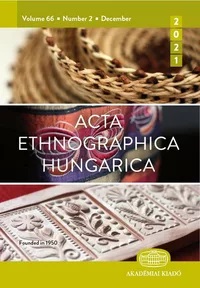“The Sisters of the Redeemer in the Trauma of Dispersion”. • The Sisters of the Divine Redeemer in the 1950s and 1960s in the Light of Recollections and State Security Reports
“The Sisters of the Redeemer in the Trauma of Dispersion”. • The Sisters of the Divine Redeemer in the 1950s and 1960s in the Light of Recollections and State Security Reports
Author(s): Katalin Paréj-FarkasSubject(s): History of Church(es)
Published by: Akadémiai Kiadó
Keywords: Sisters of the Divine Redeemer; advancing battlefront; internment; dispersion; underground existence; trauma
Summary/Abstract: While researching the history of the Sisters of the Divine Redeemer, also referred to as the Sisters of the Redeemer, it became clear that the ordeals of the Second World War and the Communist dictatorship had a profound impact on the congregation, which was engaged in nursing and teaching. The sources allow us to reconstruct the horrors of the advancing battlefront and the sisters' flight, along with their determination to provide social assistance and their role in saving Jews. The Communist regime that emerged after the war forced the congregation into an increasingly impossible situation, depriving them of their teaching positions and nursing vocation. Their internment in 1950 and the revocation of the congregation's operating license seemed to have eliminated the community entirely. However, recollections of the events of the 1950s and 1960s, together with state security reports, attest that the congregation survived in the form of a “subterranean stream,” and that tiny communities of sisters continued to pursue their monastic vocation, often in a single apartment that functioned as a mini convent. The traumas they had experienced rarely crushed the sisters' inner sense of peace, and they strove to cope with the harassments inflicted by the party-state by adapting to the new situation.
Journal: Acta Ethnographica Hungarica
- Issue Year: 67/2022
- Issue No: 2
- Page Range: 379-414
- Page Count: 36
- Language: English

